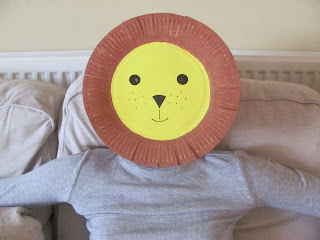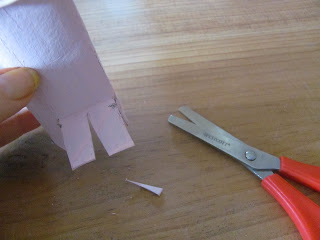This is a very quick and easy paper plate craft that works perfectly well with my book, 'Brian the Lion goes into Space'. You can either leave it as a paper plate picture or make it into a mask. Could be handy with World Book Day around the corner!
You will need:
Large paper plate
Paint
A bowl/side plate
Scissors
Black pen (like a Sharpie)
Nail scissors (optional - adult supervision needed)
Elastic (optional)
Old pair of glasses frames (optional)
Sticky tape (optional)
1. Paint the centre of the plate yellow, all the way up to the bumpy rim - it really doesn't need to be neat!
2. Once the yellow has dried a bit, find a bowl or side plate that covers most of the centre of the paper plate. Then, keep your hand on the bowl or plate while painting the brown mane around it. Make sure to go right up to the edge of the bowl. (Make brown by mixing a little red with yellow and adding a dab of blue until you're happy with the shade). Don't be tempted to take the bowl or plate off too quickly!
3. Once dry, remove the bowl and you should have a lovely, crisp yellow circle.
Now it's time to cut the mane. First, make two cuts opposite each other, just up to the edge of the yellow circle.
4. Then make another two cuts opposite each other, halfway between the ones you've just made.
5. Keep snipping halfway between your cuts, and work all the way around, until the cuts get closer together and you're happy with your mane. Doing the cutting like this keeps the mane even - it is also good scissor practice and it helps kids start to make judgements about space and distance.
6. Use a black pen like a Sharpie to draw on Brian's face. As a guide, the eyes here are about 6/7cm a part.
7. If you want to make him into a paper plate mask, then a grown up with have to make holes through the eyes with nail scissors. It helps to put some modelling clay behind the eyes, so there's something to push into. (Keep the scissors closed, press down and twist from side to side.) Make the holes a decent size, so it's easy to see out. You could make some slits in the nose too, if you want to.
8. I think the best way is to use sticky tape to stick an old glasses frame to the back of the mask. Very quick to do! And it keeps the mask nice and flat when you wear it.
9. You could attach some elastic to the mask instead, but the sides will tend to bend around the wearer's head.
Make holes at the side of his face, close to or just inside the mane. I found some of my son's paper reinforcement stickers and stuck them around the holes at the back.
Once you've knotted and tied the elastic to one side, get the mask wearer to hold it to their face while you gauge how much elastic you need on the other side. Hold the elastic at the chosen spot, and mark with black pen. Now thread it through the hole, tying a knot or two on or as near as possible to your black mark.
We painted over the knots on the front, so you don't see them so clearly.
Think the mask would look better on a smaller child! Mine are all getting so big now..


















































